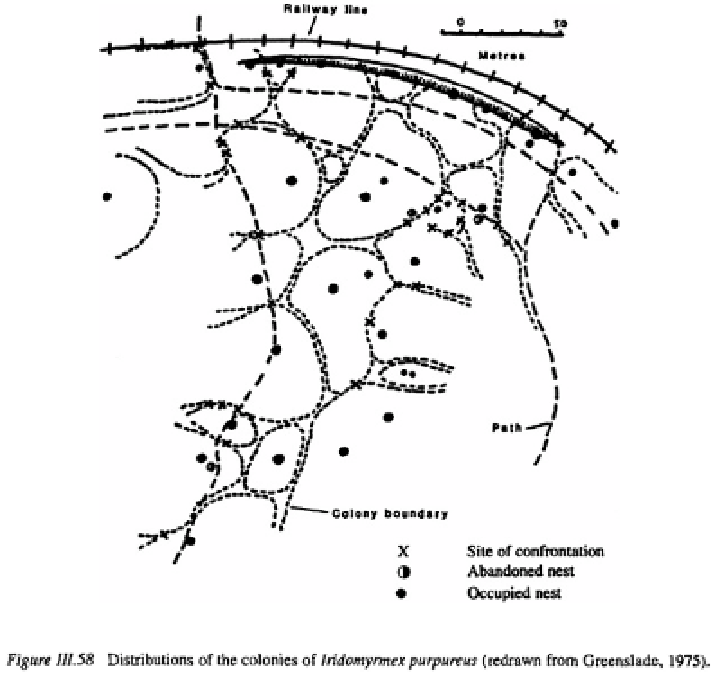Agriculture Reference
In-Depth Information
are permitted to remain with their borders. Figure III.58 presents an example of the
distributions of the absolute territories of the dolichoderine ant
Iridomyrmex purpureus
at a four hectare study site in South Australia (Greenslade, 1975). Territories are classified
as internal where they are bounded by those of other
I. purpureus
colonies and external
territories which taper off into dense vegetation, an unsuitable habitat for this species
which requires well insolated and well drained sites. Some colonies extend along tracks
in the dense vegetation and may extend up to 200 m from nests.
I
.
purpureus
is a dominant
species and excludes most other ants from within the area; the area of suitable habitat
is almost fully occupied by territories of
I
.
purpureus.
The colony pattern is considered
stable and the borders of the territories are maintained by frequent intraspecific con-
frontations.
Other territories have flexible borders and are known as
In these,
only that part of the territory containing resources currently being exploited is defended
at any one time. However, the remaining area may occasionally be searched by scouting
workers to permit the discovery of new resources or to guard it against the inroads of
competing colonies. Ants that migrate regularly, such as the army ants, do not defend
permanent territories (Gotwald, 1995).
spatio-temporal.

